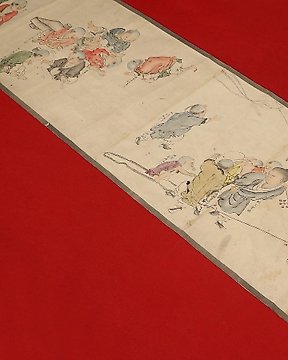
Very fine hand scroll with karako playing activities - including inscribed tomobako - After Hanabusa Itcho (1652-1724) - Japan - Edo Period (1600-1868)
No. 78063855

No. 78063855

Buson’s first art was poetry. Born to a family of farmers in a village outside Osaka, he moved to the metropolis of Edo (present-day Tokyo) at the age of 20 to become a disciple of the haiku poet Hayano Hajin (1676–1742). After Hajin’s death, Buson spent nine years traveling through northern Japan, retracing the steps of the revered seventeenth-century haiku poet Matsuo Basho (1644–1694). Buson would eventually be credited, along with Basho, with developing haiku into a major literary art form. Buson died at the age of 68 and was buried at Konpuku-ji in Kyoto.
Yosa Buson is celebrated both as one of the greatest haiku poets of all time and as an exceptional painter. In both art forms, he focused on conveying a fleeting sensation, often connecting human experience and the natural world.
His works could be found in many museums including the Seattle Art Museum, the Metropolitan Museum of Art, the University of Michigan Museum of Art, the Harvard Art Museums, the Worcester Art Museum, the Kimbell Art Museum, and the British Museum.
With tomobako.
Measurements: 27 x 14,5 cm
Very good condition, there are signs of wear due to age and use, stains, scratches, marks, damages; please, see pictures for actual condition.
Registered shipping with tracking number, well packed for safe and fast delivering!
How to buy on Catawiki
1. Discover something special
2. Place the top bid
3. Make a secure payment